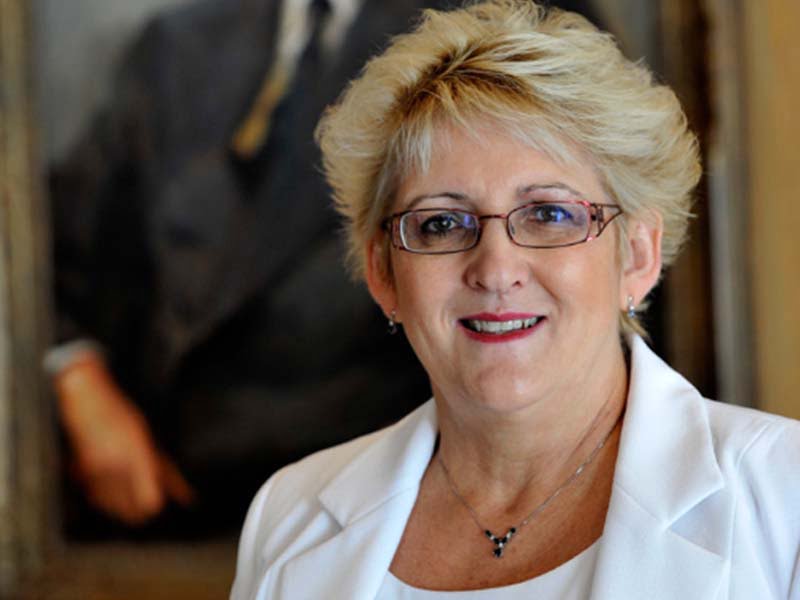The Commonwealth should fund more trials of autonomous vehicles in Australia to address security and privacy concerns in order to hasten public acceptance of the new technology, a government committee has found.
The House of Representatives Standing Committee on Industry, Innovation, Science and Resources was tasked with investigating the social issues and implications related to driverless cars late last year.
Committee chair and Nationals MP Michelle Landry tabled the committee’s report from the six-month investigation in Parliament on Monday.

“The introduction of highly automated vehicles will have wide-ranging and significant effects, and it is important that the general public is on board with these changes,” Ms Landry told Parliament.
“As the technological and regulatory barriers to automated vehicles are solved, it becomes more and more important that the social issues will come from the introduction of automated vehicles are consider,” she said.
The report recommended the government facilitate trials of automated vehicles, especially ones that expose the general public to the new technology in order to bring attention to the range of benefits associated with it.
“One of the main barriers to the public acceptance of automated vehicles is that most people have never been in one,” Ms Landry said.
“Studies have shown that people are much more comfortable with the technology once they have experienced it firsthand, and so the committee believes that more people should have that opportunity,” Ms Landry said.
The committee also said the Commonwealth should invest in automated vehicle trials with a specific application in public transport.
There have been several driverless technology trials conducted this year by state and territory governments, but none yet by the Commonwealth.
Pilot testing programs of driverless vehicles, mainly in the form of shuttle buses, are currently taking place in Western Australia, New South Wales, Victoria and the Northern Territory.
The federal government has signalled a focus on the area with a $12 million investment earlier this year into the future of positioning technology in Australia, which has wide applications in the management of autonomous vehicles.
The committee identified a number of benefits associated with the introduction of driverless vehicles in Australia, including better road safety, improved mobility, decreased traffic congestion and improved quality of life.
But a number of legal, security and privacy concerns are emerging as the key barriers preventing the widespread adoption of the technology, the committee found.
“Before Australians can be entirely comfortable in highly automated vehicles, they will want to know that the legal and insurance questions have been settled, that their personal data and their privacy are secure and that their concerns about safety have been resolved in a transparent way,” Ms Landry said.
iMove CRC outlined some of the main concerns surrounding the security and privacy of this technology in its submission to the committee.
“There is considerable concern about the perceived vulnerability of individual vehicles and the traffic system as a whole. There is potential for many undesirably scenarios if the systems of driverless vehicles are compromised,” the iMove submission said.
“These concerns are magnified by the high level of connectivity between vehicles, and their integration with myriad other devices that could introduce malware or spyware.”
To combat this, the committee recommended data privacy and cyber security be placed front and centre in government preparations for driverless vehicles.
It also recommended that the National Cyber Security Strategy investigate automated vehicles to address some of potential vulnerabilities.
The government has also been instructed to further investigate the issues involved with data rights for consumers, vehicle manufacturers and third parties.
The committee called for a continued coordinated approach from the federal and state governments, including with infrastructure standards, regulatory approaches and digital infrastructure.
To achieve this, it advised the government to establish a dedicated national body or cross-agency taskforce to coordinate the country’s approach on the issue, along with a working party made up of industry and academic stakeholders.
The committee also placed a focus on ensuring the benefits of driverless technology reach Australians with a disability, older members of society and those living in rural or regional areas.
Industry bodies and tech companies are making efforts to position Australia as a world-leader in the space, and as a potential testing ground for new driverless technologies.
“It’s apparent that the work happening here in a regulatory sense, with the guidelines for trials and legislation that’s passing, that Australia is up with the leading countries now in paving the way for introducing the technology safely,” Australia and New Zealand Driverless Vehicle Initiative executive director Rita Excell told InnovationAus.com.
Do you know more? Contact James Riley via Email.

